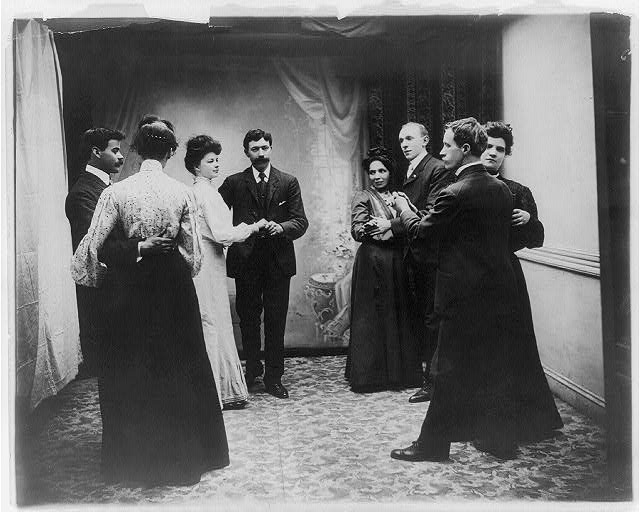Note: This article has been excerpted from a larger work in the public domain and shared here due to its historical value. It may contain outdated ideas and language that do not reflect TOTA’s opinions and beliefs.
From Home Life in Ireland by Robert Lynd, 1909.
I suppose in this connection it will not be inappropriate to speak of Irish dancing. Some people declare that the ancient Irish did not dance at all; at least, that no trace or mention of dancing is to be found in their literature. Dancing, however, has flourished in Ireland for several centuries, and Irish dances were popular at the Court of Queen Elizabeth. The usual dances are different sorts of jigs and reels, very unlike the jigs and reels which tail-coated Paddies and short-skirted colleens so often perform for the amusement of the non-Irish, sometimes even of the Irish themselves.
The most remarkable quality in Irish dancing is its mixture of high spirits, and what, for want of a better word, I must call decorum. Irish dancers do not bring their arms into play as do the dancers of Scotland, but keep the upper parts of their bodies curiously still. Further, there is no seizing of waists in Irish dances, except in some square dances on the model of quadrilles, and these the purists declare are not real Irish dances at all. It is always exhilarating to see the dances that take place in barns and on kitchen-floors, where the men in their thick-soled, heavy-nailed boots perform wonderful feats of agility.
Besides jigs and reels and the ordinary country dance, or long dance, there are also a number of what might be called picture dances or drama dances. The Rocky Road to Dublin, for instance, gives a humorous impression of a limping journey. The Walls of Limerick had perhaps a similarly imitative origin. As for the Waves of Tory, with its rhythmical ups and downs, to watch it is to have one's senses exhilarated as by the sight of the hosts of the waves advancing towards the shore.
Irish dances, it may be said, are not danced in all parts of Ireland, though they are now being spread with great enthusiasm. It is impossible to tell whether they will ever completely drive foreign dances out of Ireland. Some of the revivalists themselves have no objection to the introduction of foreign dances and games are firmly established again as part of the social life of the people.
Robert Lynd, Home Life in Ireland (London: Mills, & Boon, 1909), 202-203.
About TOTA
TOTA.world provides cultural information and sharing across the world to help you explore your Family’s Cultural History and create deep connections with the lives and cultures of your ancestors.


